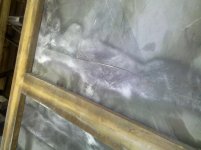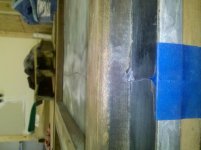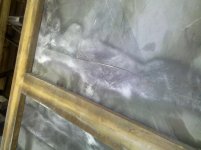To answer your question it is to place between a good slate and the broken pieces.
You see the moon, but miss the sunset Rob!
[/QUOTE]Not a bad use actually, below is what I do. Maybe we can each take something from this.[/QUOTE]
Don't you think you should have asked yourself something like..."self....don't you think Glen's fixed broken slates before?"...Naaa, I'm going to get him on this one....I just know I am!
Only to find out that I have fixed broken slates before

[/QUOTE]And so you know, the lower slate was checked for flat an stoned flat prior. Since mine is an antique, I did have to assure the lead for the retained nuts was not above the surface of the slate...[/QUOTE]
Such a waste of time Rob, to have to fine level the bottom slate so much...that you had to stone it for flat prior to placing the broken slate on top in order to repair it

Now...the real question for you Rob....is did YOU learn anything from me....as I certainly learned nothing from you on this subject!
You see, I don't need the bottom slate to be perfectly flat to use the soup cans, the soup cans are to be able to lift the slate up off the bottom slate, and hold it up high enough so that I can also work on the bottom side of the slate at the same time I'm working on the top side....unlike you, you can only work on one side.
With the broken slate elevated up, I can shim on top of my cans and level out the broken pieces of slate, match them flat with a straight edge, duct tape the crack on the bottom side to create a bottom, then fill the crack with super glue with out having it running straight through the crack onto the bottom slate. And these two pieces of broken slate go back together so close there's only a slight line to even tell they were broken.
So, I guess you just learned something from me for free

Glen..."GOD of mechanics, as YOU Rob....refer to me!"
Don't ask me such a stupid question again...as a way of trying to test me as a mechanic!!!




